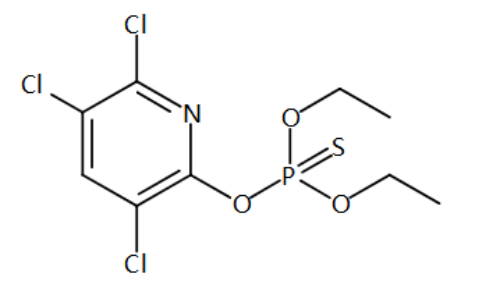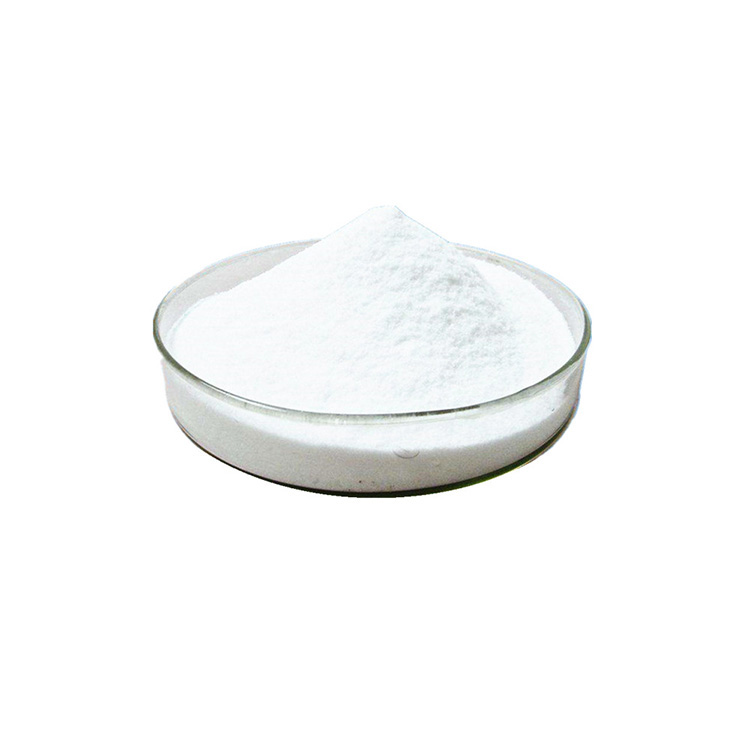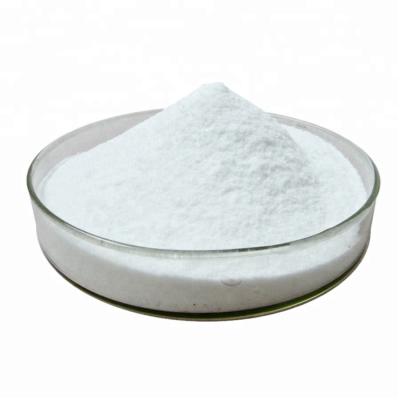Chlorpyrifos Organophosphorus Insecticide
Chemical name:
O,O-Diethyl O-(3,5,6-trichloropyridin-2-yl) phosphorothioate
Molecular formula: C9H11Cl3NO3PS
Structural formula:

Molecular weight: 350.59
CAS No. : 2921-88-2
Product description:
Chlorpyrifos (CPS), also known as Chlorpyrifos ethyl, is an organophosphate pesticide used on crops, animals, and buildings, and in other settings, to kill a number of pests, including insects and worms. It acts on the nervous systems of insects by inhibiting the acetylcholinesterase enzyme. Chlorpyrifos was patented in 1966 by Dow Chemical Company.
Chlorpyrifos is considered moderately hazardous to humans by the World Health Organization based on its acute toxicity. Exposure surpassing recommended levels has been linked to neurological effects, persistent developmental disorders, and autoimmune disorders. Exposure during pregnancy may harm the mental development of children, and most home uses of chlorpyrifos were banned in the U.S. in 2001. In agriculture, it is "one of the most widely used organophosphate insecticides" in the United States, and before being phased out for residential use it was one of the most used residential insecticides.
Physical and chemical properties:
white crystals, with a slight thiol smell
Density (g/mL, 25/4℃): 1.398
Melting point (℃): 42.5-43
Boiling point (℃, normal pressure): 200
Refractive index: 1.56
Flash point (℃): 181.1
Water solubility: slightly soluble in water, soluble in most organic solvents
Usage:
Chlorpyrifos is used in about 100 countries around the world to control insects in agricultural, residential, and commercial settings. Its use in residential applications is restricted in multiple countries. According to Dow, chlorpyrifos is registered for use in nearly 100 countries and is annually applied to approximately 8.5 million crop acres. The crops with the most use include cotton, corn, almonds, and fruit trees, including oranges, bananas, and apples. Use of chlorpyrifos is not recommended on tomato crops, as it kills the whole plant within two days.
Chlorpyrifos was first registered for use in the United States in 1965 for control of foliage and soil-born insects. The chemical became widely used in residential settings, on golf course turf, as a structural termite control agent, and in agriculture. Most residential use of chlorpyrifos has been phased out in the United States; however, agricultural use remains common.
EPA estimated that, between 1987 and 1998, about 21 million pounds of chlorpyrifos were used annually in the US. In 2001, chlorpyrifos ranked 15th among pesticides used in the United States, with an estimated 8 to 11 million pounds applied. In 2007, it ranked 14th among pesticide ingredients used in agriculture in the United States.
Submitted successfully
We will contact you as soon as possible




